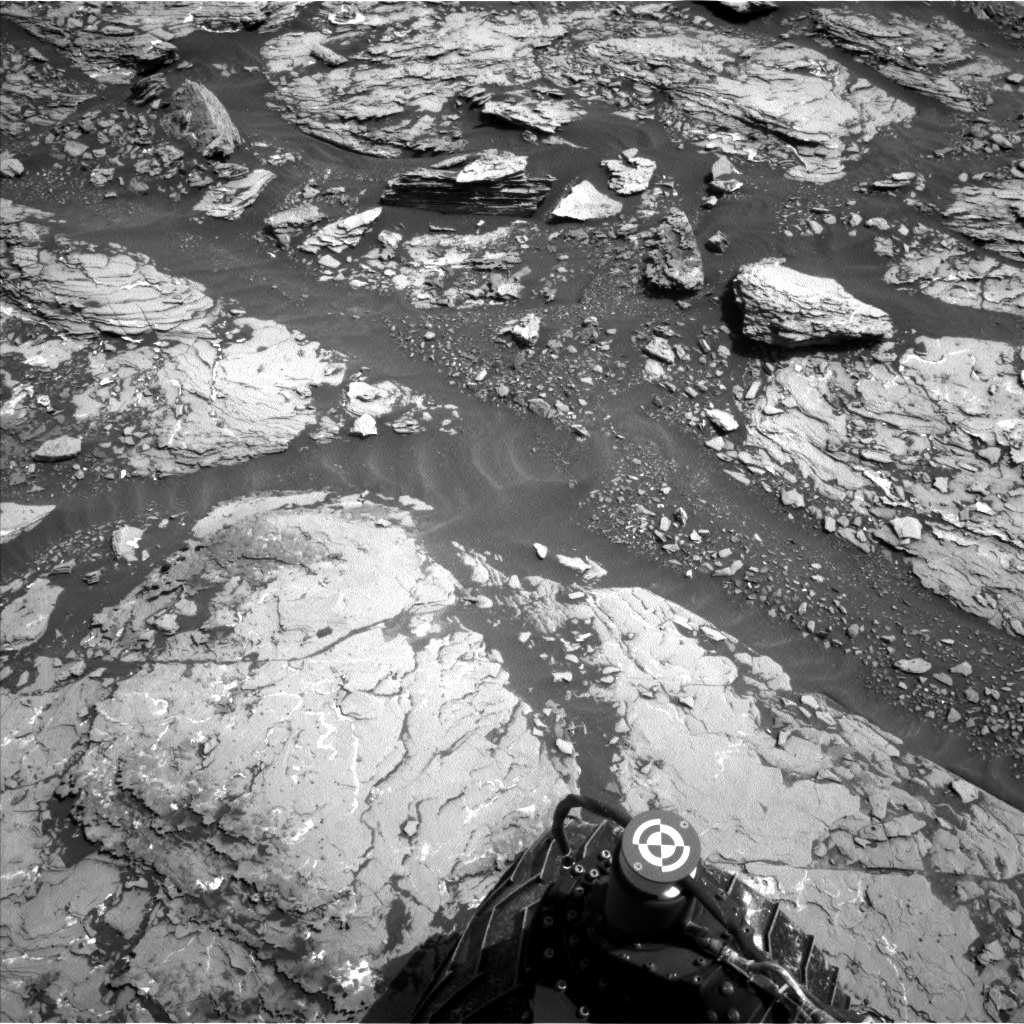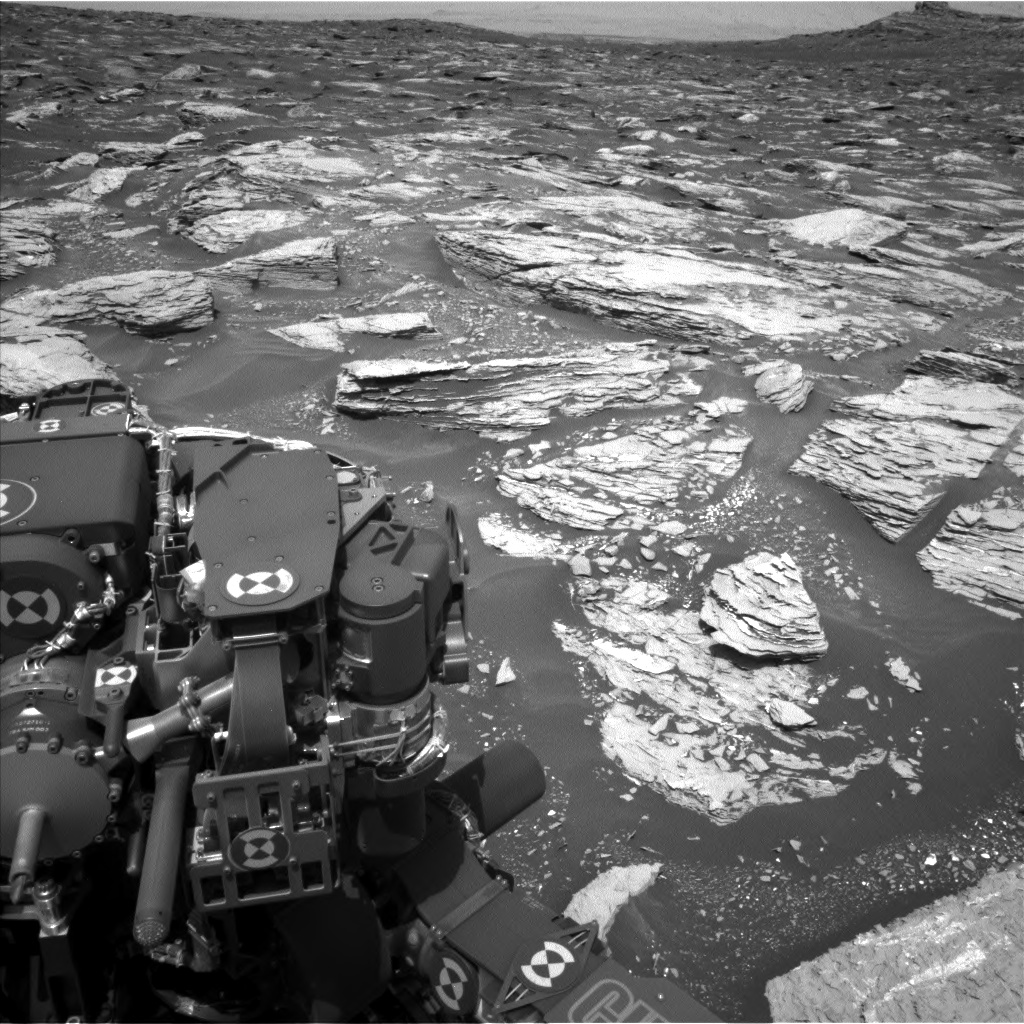Curiosity continues to drive through an otherworldly jumble of in-place bedrock, tilted rocks, sand with small ripples, and local pebbly debris piles. Vera Rubin Ridge continues to loom larger in the rover’s forward view, although progress is somewhat slow due to the difficult terrain. Yestersol’s drive was 16 meters.
Just 20 sols ago we passed the northern vernal equinox, but the rover is ‘down under’ (at 4 degrees south latitude), so we’ve just started the fall season. For those readers in the Earth’s northern hemisphere, it’s like about October 1 on Earth. Over the next half of a Mars year (or nearly one Earth year) the rover will have a little less power for driving, arm deployment, and instrument activities as it spends a little more energy keeping itself warm. The body of the rover is kept warm by a fluid loop that distributes heat from the radioisotope thermoelectric generator (RTG) to the rover body, but the extremities (arm, wheels, and mast) need to be heated electrically. As a result, the rover will take one day to recharge its battery this weekend. It’s a holiday weekend in the US and much of Europe, so why shouldn’t Curiosity have a day off too?
We also have a soliday, but that’s not a rover holiday, in fact, it’s not a day on Mars at all. Rather, it’s an extra day we have on Earth every 37 Mars days due to the shorter day on Earth. So Mars has one less day for this holiday weekend. All told, the rover will be working two days this weekend.
As I write today’s Mars blog post, we are finishing the science operations working group (SOWG) meeting, arranging the plan. We have a beautiful "White Ledge" right in front of the rover, and so we decided to spend these two Mars days doing lots of analyses. We are interrogating the ledge with two different arm placements, an evening APXS integration on a location named "Patty Lot Hill," and a night integration on "White Ledge" after using the dust removal tool (DRT). MAHLI takes images of these targets the following sol. We are taking extra precautions in case the rather thin ledge breaks when we place the arm on it. We are also interrogating the ledge with Mastcam and ChemCam. Other ChemCam targets include "Shooting Ledge" (a rocky ridge just behind "White Ledge"), "Middle Ledge" behind and to the left, and "Halfway_Mountain", a sand ripple crest. SAM is doing an atmospheric measurement, and REMS and RAD are taking measurements this weekend too, so it is an "all-instruments" weekend except for CheMin.
At the end of the second sol Curiosity drives to a good vantage point (< 20 m). We also managed to slip in Mastcam sun observations and a ChemCam sky spectral observation on Tuesday morning (Sol 1712) before the next uplink of activities from Earth.


